J. P. Weigle for the Concours de Machines
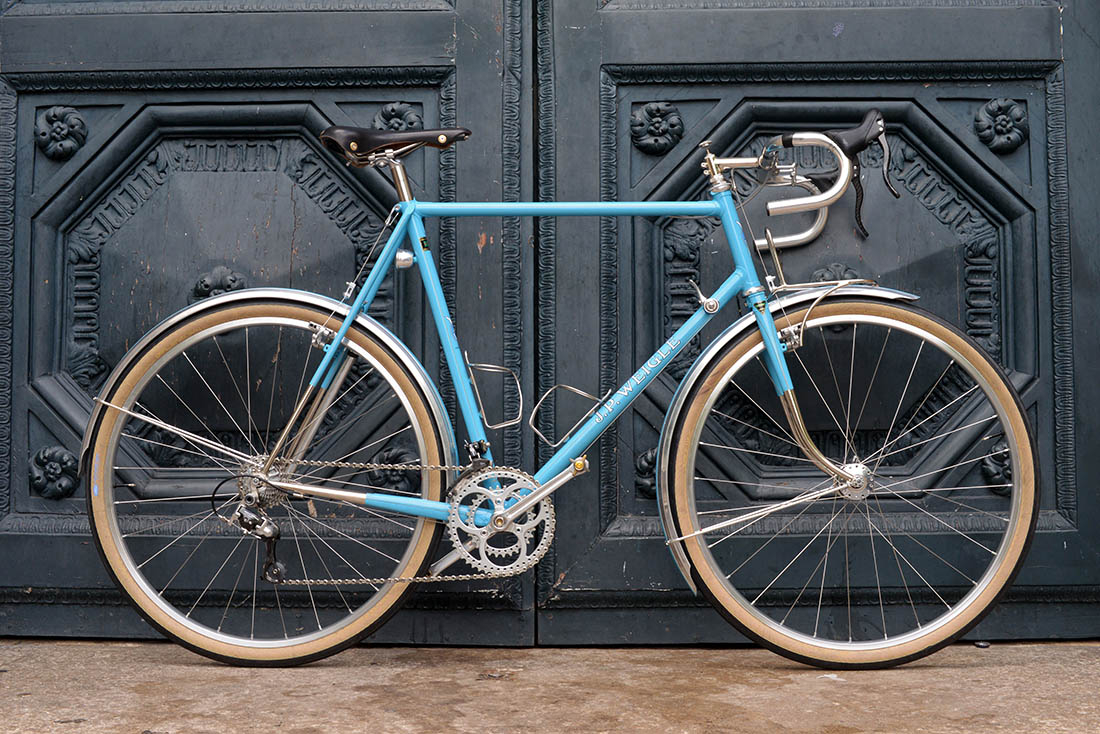
In this year’s Concours de Machines technical trials, I am riding J. P. Weigle’s entry (above). The Concours is a competition for the best ‘light randonneur bicycle.’ The rules stress light weight, reliability and innovation. Bikes must be fully equipped with lights and the ability to carry luggage, plus a pump and a bell. There are bonus points for fenders.
Bikes are examined at the beginning, with points for light weight and desirable features. Then they are ridden over an extremely challenging course to see how well they hold up, with penalties for anything that goes wrong. Click on the link for the complete rules of the Concours (also available in English).
Building a bike for the Concours is a major undertaking, because most parts have to modified for light weight and other features. It’s almost unavoidable that the bike is finished barely in time for the event. In our case, the bike arrived in France almost ready, so we took it to our friends at Cycles Alex Singer to finish it. Then Olivier Csuka hung it from the scale that already weighed the Singers that won in the 1940s Concours.
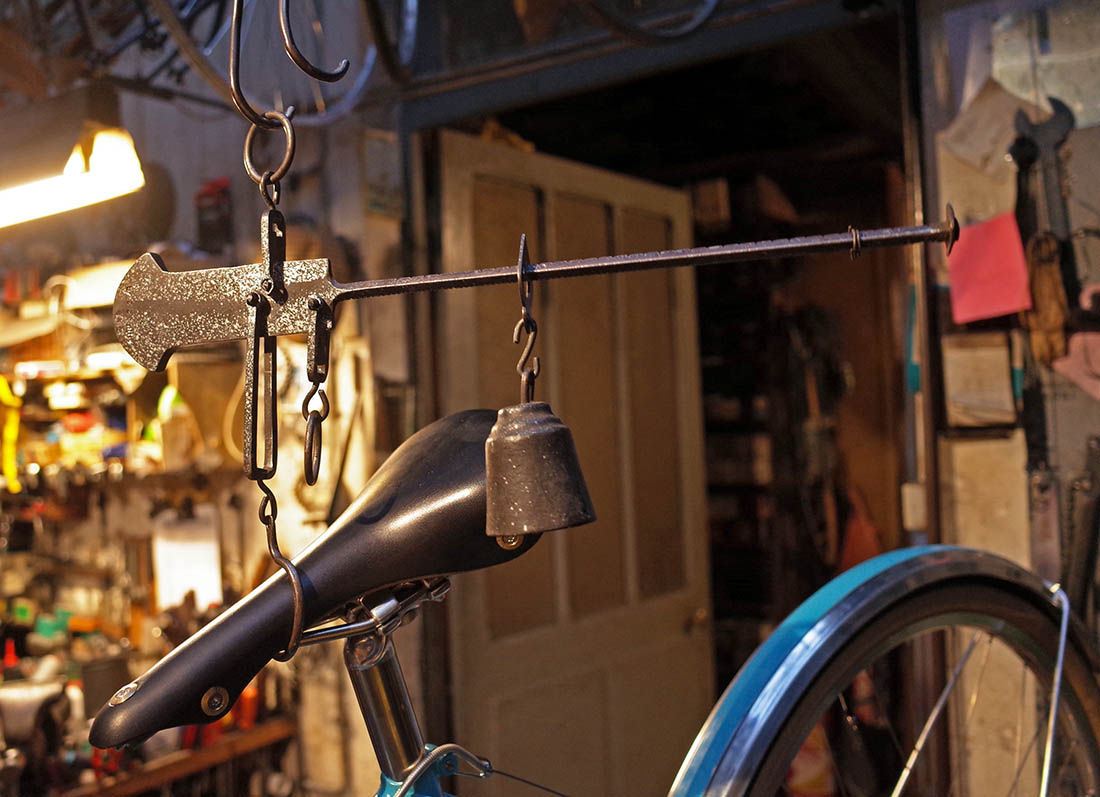
We were excited to see that the bike (with pump and pedals) weighed just 9.1 kg (20.0 lb). That is incredibly light for a fully equipped randonneur bike, especially since we didn’t want to make a ‘one-event’ bike, but a bike that will be fun to ride for many years. So we built the bike with a generator hub instead of a superlight sidewall generator (which is noisy and can slip in the rain), with a comfortable Berthoud leather saddle and ergonomic Compass Maes Parallel handlebars. We avoided the temptation of ‘crazily light’ components with limited lifespans.
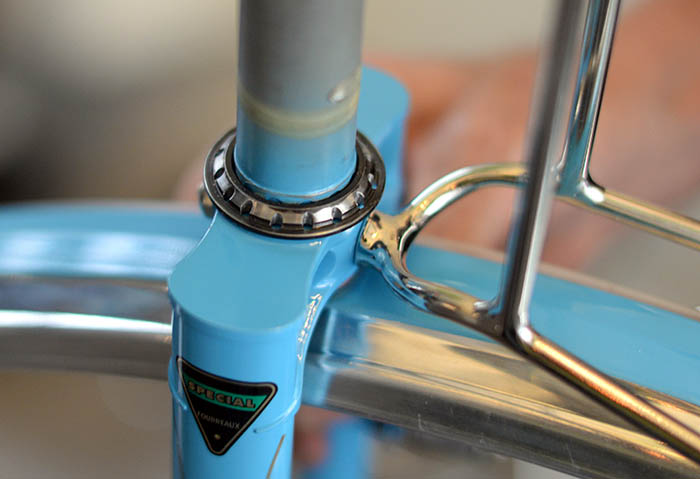
How do you make a bike so light? You choose the very light components, and then modify them to make them even lighter. Peter Weigle even cut pieces out of the headset crown race. (The race only locates the cartridge bearings, so there are no balls that could fall into the cutouts).
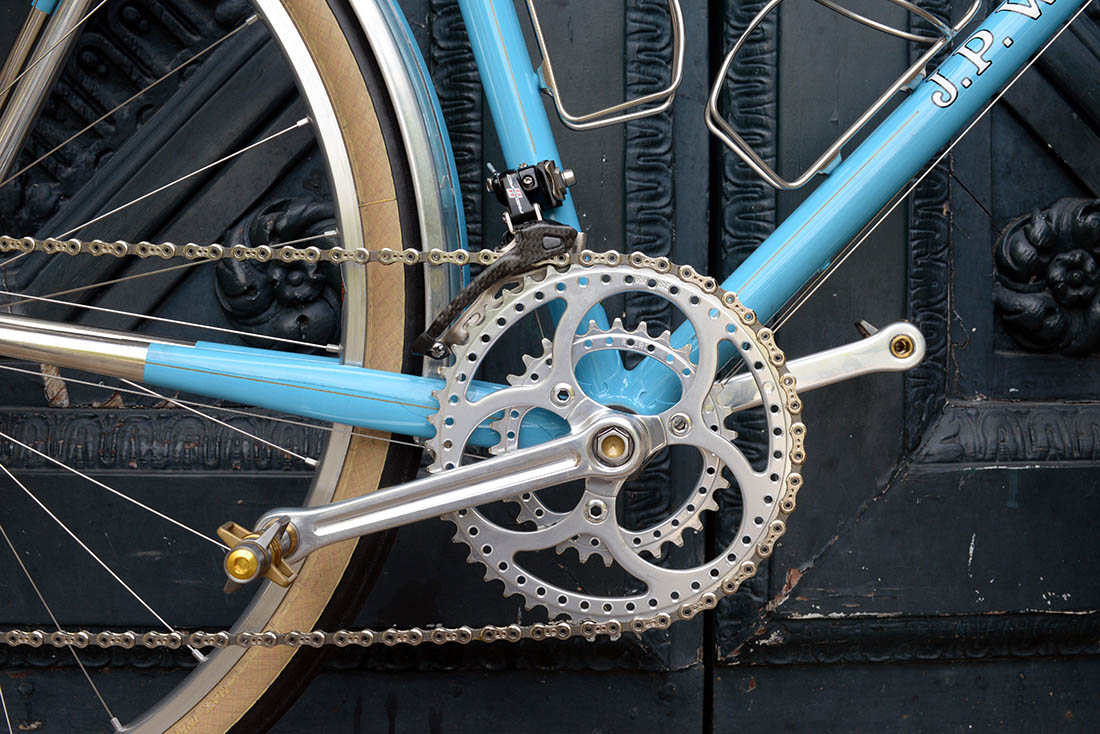
The Rene Herse cranks already are among the lightest in the world, but they were reprofiled to reduce their weight further. The holes drilled in the chainrings save another 10 g.
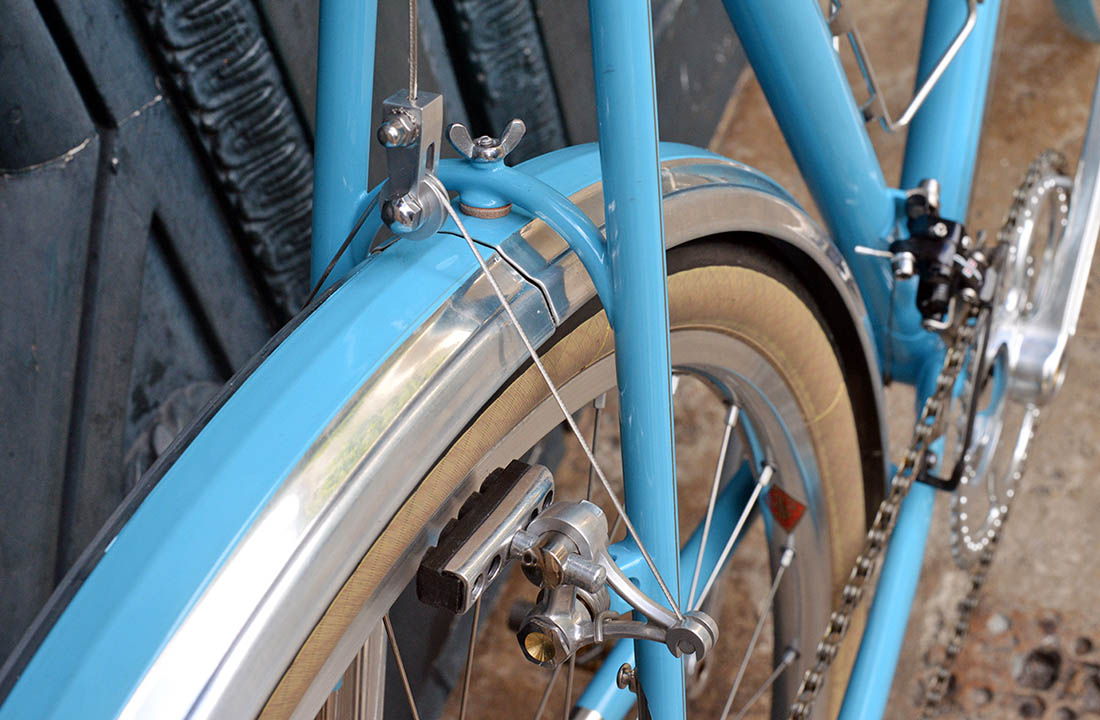
Prototypes for the new Rene Herse brakes save even more weight. They are modeled on the classic originals, but adapted for current-style posts. With hardware made from titanium and aluminum, they probably are among the lightest brakes available today, yet they offer great stopping power.
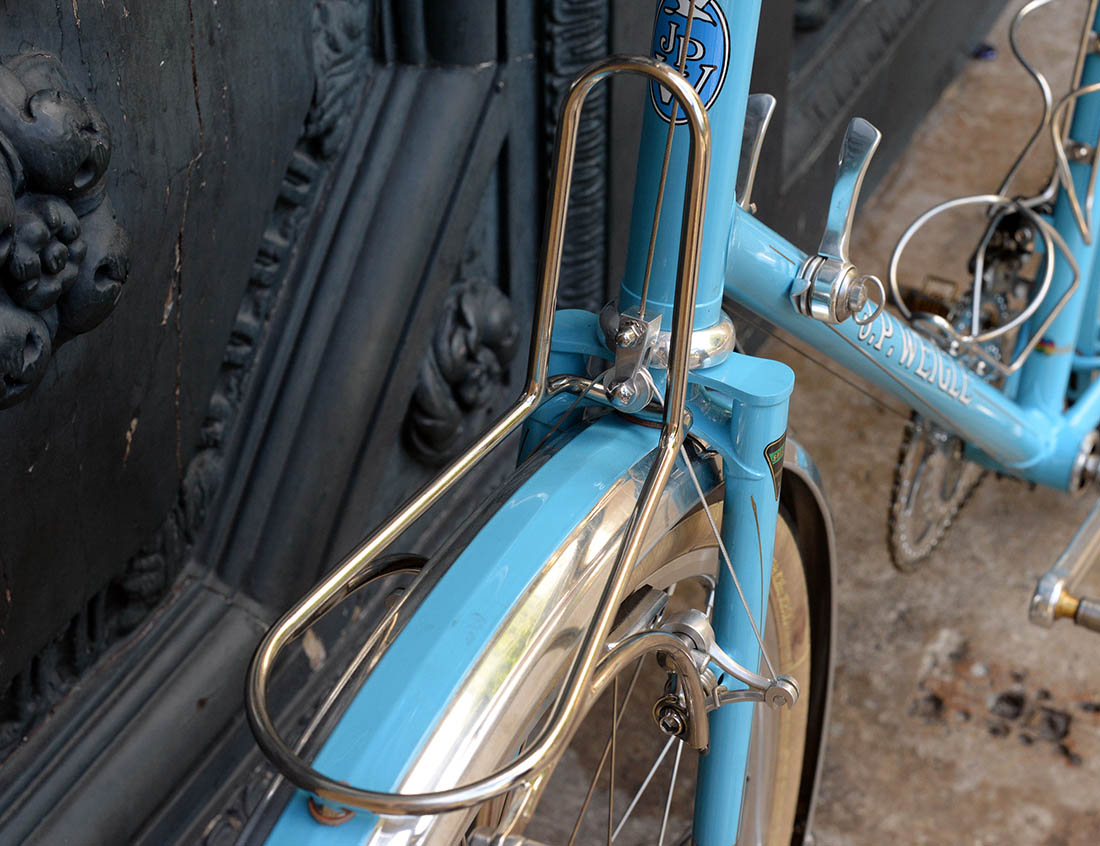
Peter Weigle also made a superlight rack. It weighs just 137 g when a standard Rene Herse rack tips the scales at 168 g, and most production racks weigh 200 g or more.
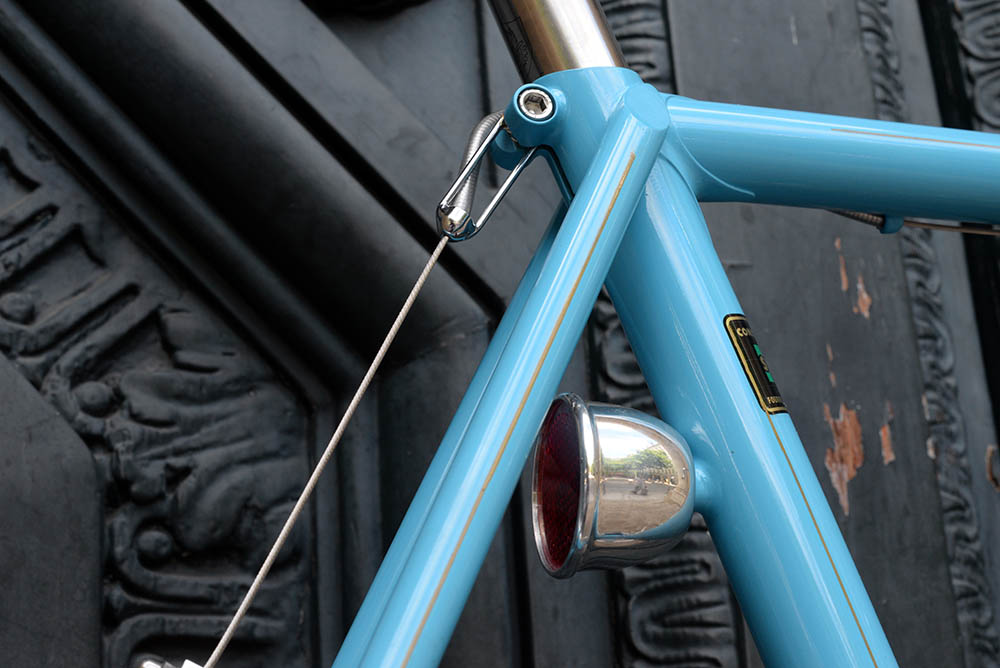
Peter even reprofiled the Compass taillight to save a few more grams.
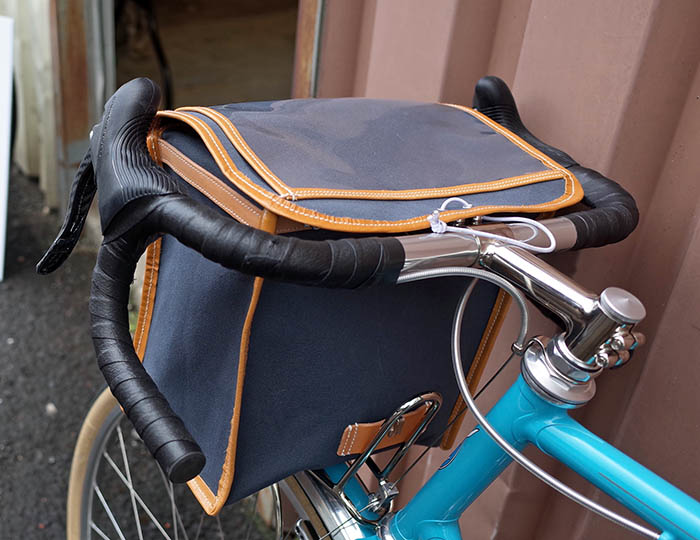
We worked with Gilles Berthoud to make a superlight handlebar bag that weighs just 266 g. Made from the same canvas and leather as the standard Berthoud bags, it eliminates all outside pockets and reduces the leather reinforcements to a minimum. Even though it’s the lightest handlebar bag I’ve ever seen, it still incorporates a map case on top. Because without it, you risk getting lost!
When the bike was weighed at the Concours ready to go, loaded up with its bag, spare tube and tools, it weighed just 9.7 kg (21.4 lb).
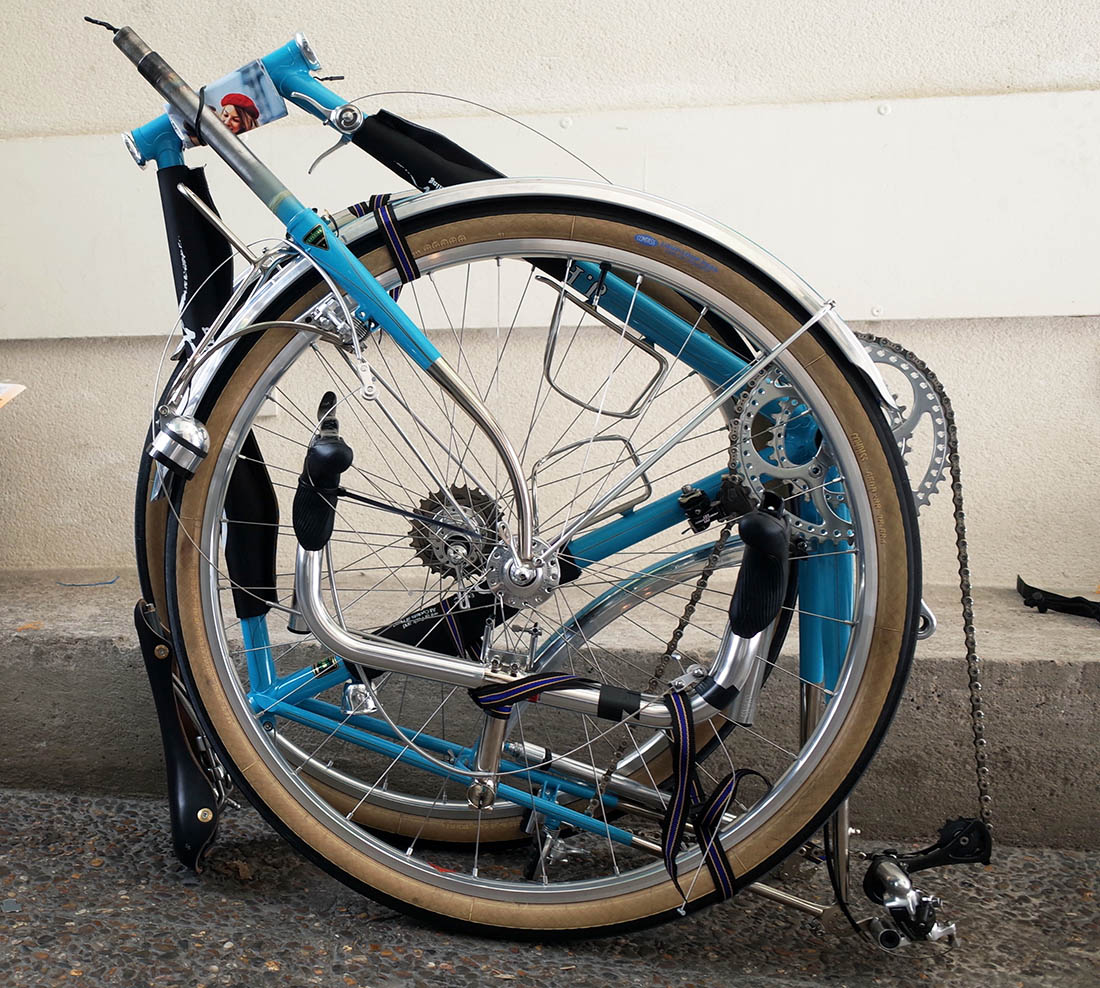
Despite the focus on light weight, we wanted to include innovative features. The bike disassembles Rinko-style, so it’s easy to carry in cars, airplanes and trains. In fact, this came in very handy on the way to the Concours, when we had to fit five people, their luggage, and three bikes into a station wagon…
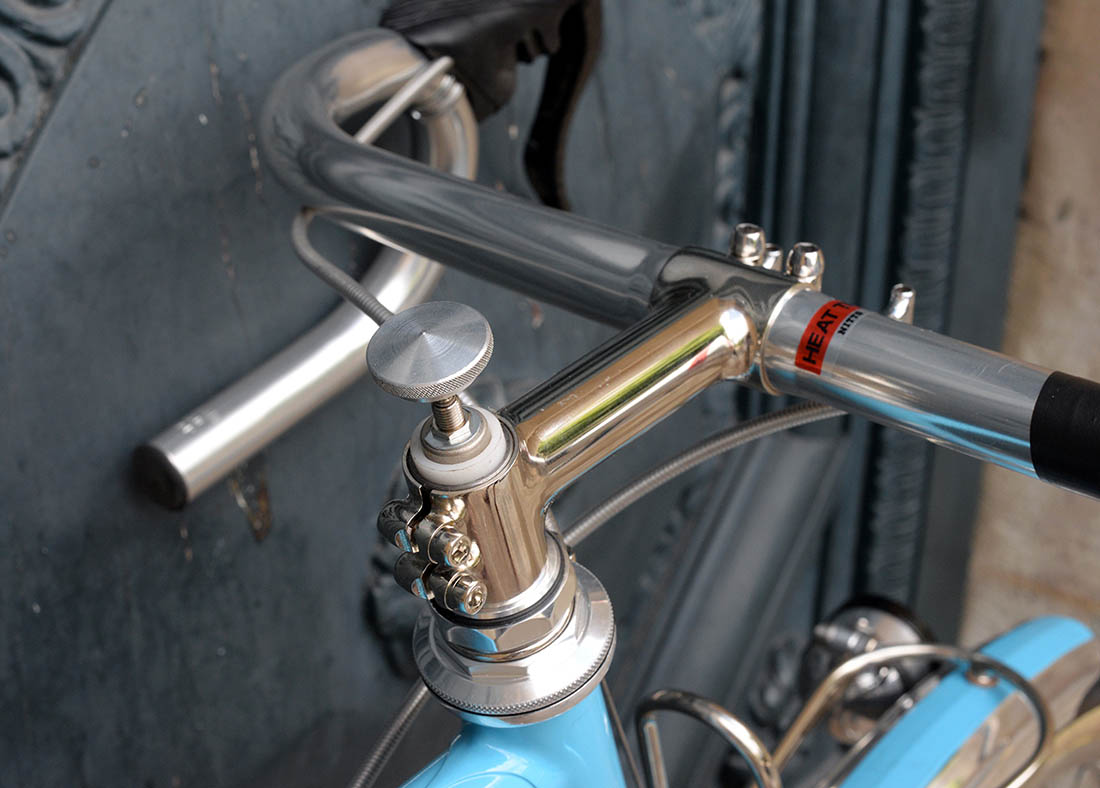
A switch on the stem operates both head- and taillights. When descending mountain roads, it’s easy to switch on the lights when a tunnel appears. At dusk, you can ride without lights to save a little resistance, but turn them on when a car appears in the distance. And if the bike is used in Paris-Brest-Paris, where you often ride in pelotons at night, you can turn the headlight off when it reflects off the calves of the riders in front of you. (The standlight still makes your position obvious to the riders around you.)
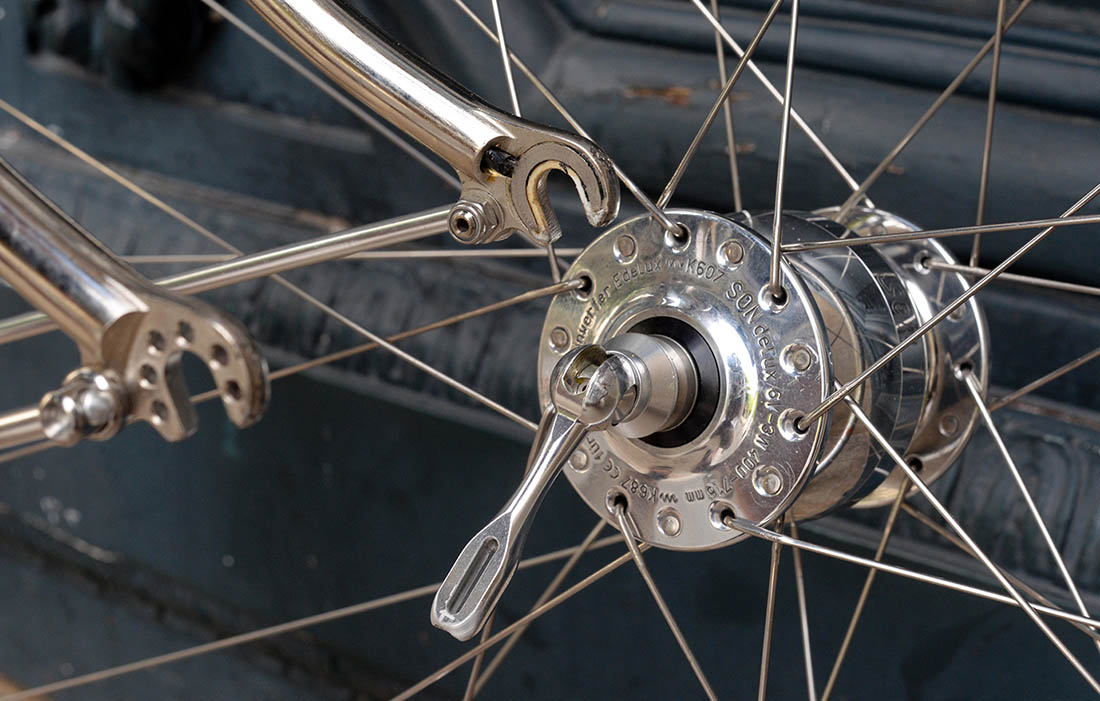
For reliability, Peter did all the standard things of directly mounting the fenders to the frame, etc. The generator hub uses Schmidt’s SL system, which eliminates the external wires that connect the hub to the lights. Instead, an insulated ring on the hub connects to a similarly insulated plate on the left dropout, with the axle and the frame forming the ground. The positive wire runs through the frame and rack to the headlight and taillight. Not having wires means there is one less thing to go wrong.
We didn’t take the weight savings to an extreme: We used a Delux Wide-Body hub, which is a few grams heavier, but makes for a lot stronger wheel. There are other places where we could have saved weight, but we opted for comfort, performance and reliability instead.

Today was the first stage of the bike test. With more than 4000 m (13,000 ft) of climbing, the test was more challenging for the rider than for the bike. The photo below shows the Weigle after the 230 km (140 mile) stage over mountain bike trails and muddy forest paths (above). The bike passed the examination of the jury without a single complaint, and it even remains remarkably clean for what it’s been through today.
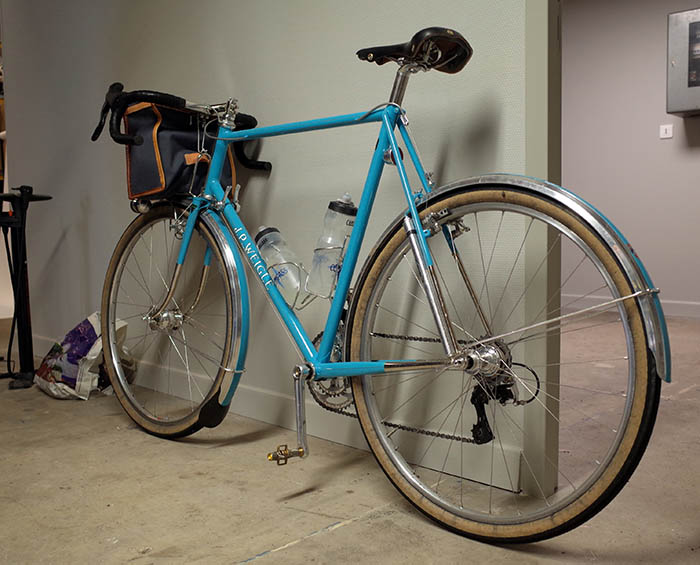
Tomorrow is another stage of the bike test, then comes the final reckoning. The jury, the builders and the public each also get to award some points. Together with the points for the features and penalties for any malfunction, this determines the final score. At the end, the bike with the most points will win the 2017 Concours de Machines.
Further reading (added 8/30/2017):
- Natsuko’s post about the Concours de Machines (in Japanese).
- Cyclodonia’s article about the Weigle.


